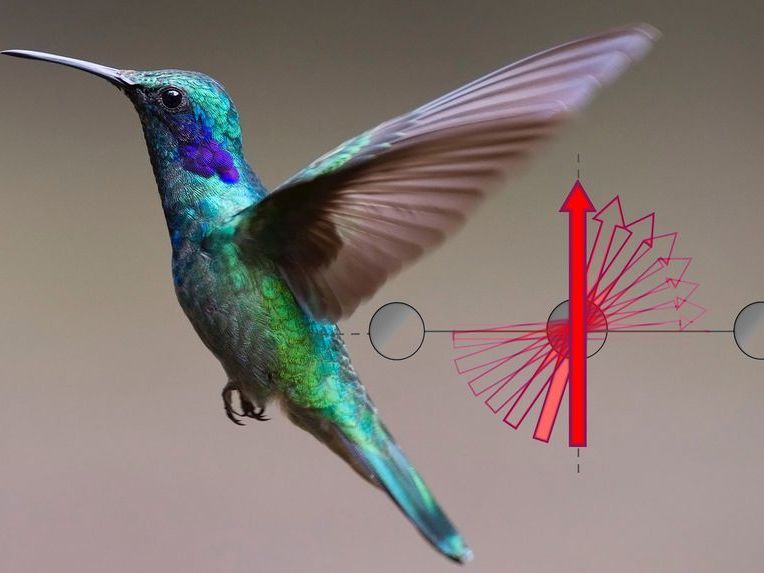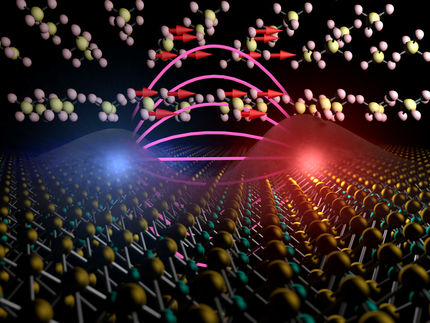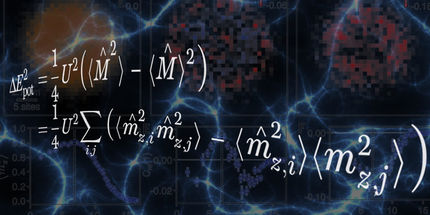Attention, the electron is too fast!
Why do different measurements of material properties sometimes give different results?
It is very hard to take a photo of a hummingbird flapping its wings 50 times per second. The exposure time has to be much shorter than the characteristic time scale of the wing beat, otherwise you will only see a colorful blur. A very similar problem is encountered in solid-state physics, where the aim is to determine the magnetic properties of a material. The magnetic moment at a certain location can change very quickly. Therefore, measuring methods are needed which are fast enough to resolve these fluctuations. With this basic idea in mind, scientists at TU Wien (Vienna), in collaboration with research groups from Würzburg (Germany), has now succeeded in solving a puzzle of solid-state physics.

Measuring a squickly as possible: It's all about speed - if you are trying to take a photo of something fast, or measure magnetic material properties
Technische Universität Wien
Magnetism and Superconductivity
"If you want to understand a material, you have to understand its magnetic properties," says Prof. Alessandro Toschi from the Institute of Solid State Physics at TU Wien. "Not only do they tell us how the material reacts to magnetic fields, they are also closely related to other properties of the material - for example, its electrical behavior." Magnetic material properties play a particularly important role in the search for high-temperature superconductors.
However, it was repeatedly found that different measurements of the magnetism of certain materials lead to different results. "Sometimes no meaningful results were obtained at all, sometimes different measurement methods led to contradictory data," says Clemens Watzenböck (Institute for Solid State Physics, TU Wien). "We were now able to solve this mystery with purely theoretical calculations."
The mobility of the electrons
The team from Vienna and Würzburg was able to show that the mobility of the electrons in the material determines which methods can be used to measure the magnetic properties. "The spin of the electrons in the material causes a magnetic moment that fluctuates quite spontaneously. These magnetic fluctuations are caused by the natural movement of the electrons. Therefore, the magnetic moment can also be cancelled out very quickly by the motion of the electrons”, says Toschi. “The faster the electrons can move inside the material, the faster they can obscure the occurrence of a magnetic moment."
This means that if there is a process in the material that slows down the electrons - e.g., strong scattering with other electrons or with the vibrating atoms of the material so that they can no longer move very fast in the crystal - then the corresponding magnetic moment remains measurable for much longer.
"We have developed a method that allows us to find out, through refined theoretical analyses and numerical simulations, on which typical time scale the magnetic moments in a particular material are shielded," explains Watzenböck. The magnetic moment can only be measured if you have a measuring method that produces a result on a shorter time scale. If the measurement takes longer, you only get a blurred average result - similar to when you photograph a hummingbird with a long exposure time.
Iron Superconductors
The research team was able to apply this approach to the particularly important material class of iron-based superconductors. "We were able to show that the characteristic time scale of magnetic fluctuations in these superconductors differs by an order of magnitude depending on the material - it ranges from about 3 femtoseconds to about 30 femtoseconds," reports Clemens Watzenböck.
This explains why the results of inelastic neutron experiments are easy to interpret for some materials and not for others: The time scale of such neutron experiments is about 10 femtoseconds. Short enough for some materials, but too long for others. If, on the other hand, other measuring methods are used, such as X-ray spectroscopy, which operates on a shorter time scale, the magnetic moment of all these materials should remain clearly visible.
The newly developed method of calculating characteristic time scales of materials can be applied not only to magnetic properties but also to other important material properties. "We assume that our new method will be very useful in the future for planning and correctly interpreting a wide variety of spectroscopic experiments," says Alessandro Toschi, "There are still many open questions in this field - with our method we now want to better understand the physics of known materials and even facilitate the search for new, better materials, such as superconductors with high critical temperatures".





























































